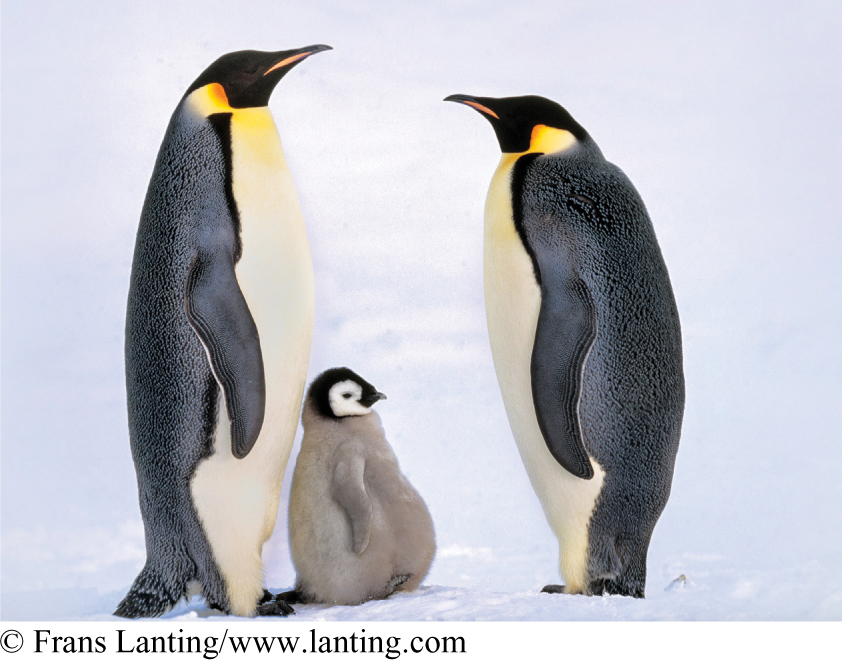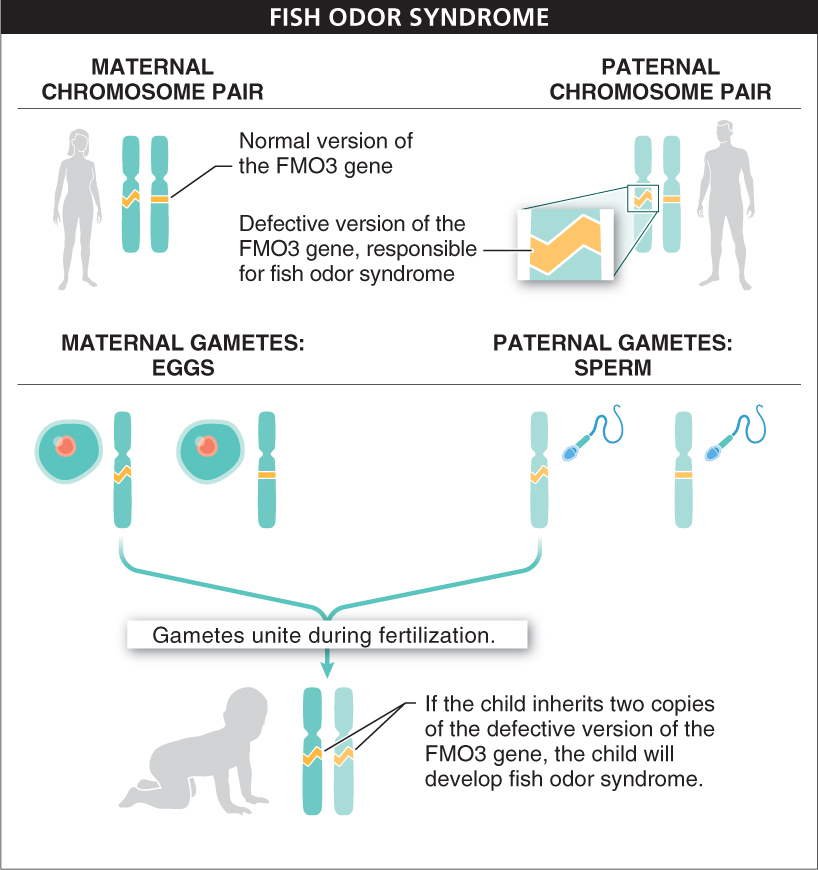
How can a single bad gene make you smell like a rotten fish?
Can a gene be cruel? Of course not. But if one could, consider this candidate: in humans, there is a gene for an enzyme called FMO3 (flavin-
About 200 cases of fish odor syndrome have been reported, but researchers suspect that it may be under-
For individuals born with this malady, beyond their own suffering there looms a scary question: “Will I pass this condition on to my children?” They might also wonder how they came to have the disorder, particularly if neither of their parents suffered from it.
Fortunately, most of us do not have to worry about fish odor syndrome, but we do wonder about many other inherited traits that we may or may not pass down to our children. Where do we begin and our parents end (FIGURE 7-1)?

In many cases, the answers to questions about heredity are simple. Recall from Chapter 6 that sexually reproducing organisms inherit one copy of each chromosome from each parent so that they carry two copies of every chromosome in every cell (except their sex cells). Humans, for example, have 23 pairs of chromosomes (46 individual chromosomes). At each location—

279
The gene for FMO3 is on chromosome 1. There is a normal version—

When it comes to having children, there is a bright side, at least. Although individuals with fish odor syndrome carry two defective copies of the allele and will pass on one set of the bad instructions in every sperm or egg cell that they make, their children won’t necessarily inherit the disease. As long as the other parent supplies a normal version of the FMO3 gene, the child will not have fish odor syndrome. The unaffected children, though, will carry a silent copy of the fish odor allele, and if, when they have children, it comes together with a defective FMO3 allele from another person, the fish odor trait will be expressed. In this way, some alleles can exist in a population without always revealing themselves.
In this chapter, we explore how heredity works. Inheritance follows some simple rules that allow us to make sense of patterns of family resemblance such as facial features or hair texture and even to predict the likelihood that an offspring will inherit a trait. We’ll also examine why the behavior of some traits is easy to predict while many other traits have less straightforward patterns of inheritance, yet still can be studied experimentally and yield predictable patterns.
TAKE-HOME MESSAGE 7.1
Offspring resemble their parents because they inherit genes—
How many alleles of each gene do you have? Where did you get them?
Individuals have two copies (alleles) of each gene, having inherited one from each parent.
280